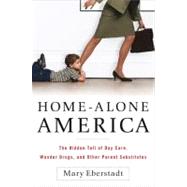
Note: Supplemental materials are not guaranteed with Rental or Used book purchases.
Purchase Benefits
What is included with this book?
| Contents | |
| Introduction | p. xiii |
| The Real Trouble with Day Care | p. 1 |
| The Furious Child Problem | p. 23 |
| Why Dick and Jane Are Fat | p. 39 |
| The Mental Health Catastrophe | p. 57 |
| Wonder Drugs and Double Standards | p. 81 |
| "Ozzie and Harriet, Come Back!": The Primal Scream of Teenage Music | p. 105 |
| The Ravages of "Responsible" Teenage Sex | p. 123 |
| Specialty Boarding Schools: Tough Love or Ultimate Outsourcing? | p. 141 |
| Conclusion: Beyond the Blame Game | p. 159 |
| Epilogue | p. 171 |
| Notes | p. 181 |
| Bibliography | p. 199 |
| Index | p. 209 |
| Table of Contents provided by Publisher. All Rights Reserved. |
The New copy of this book will include any supplemental materials advertised. Please check the title of the book to determine if it should include any access cards, study guides, lab manuals, CDs, etc.
The Used, Rental and eBook copies of this book are not guaranteed to include any supplemental materials. Typically, only the book itself is included. This is true even if the title states it includes any access cards, study guides, lab manuals, CDs, etc.